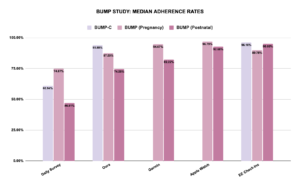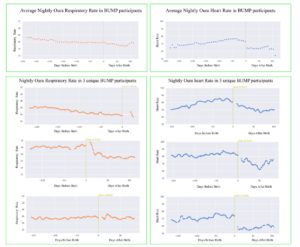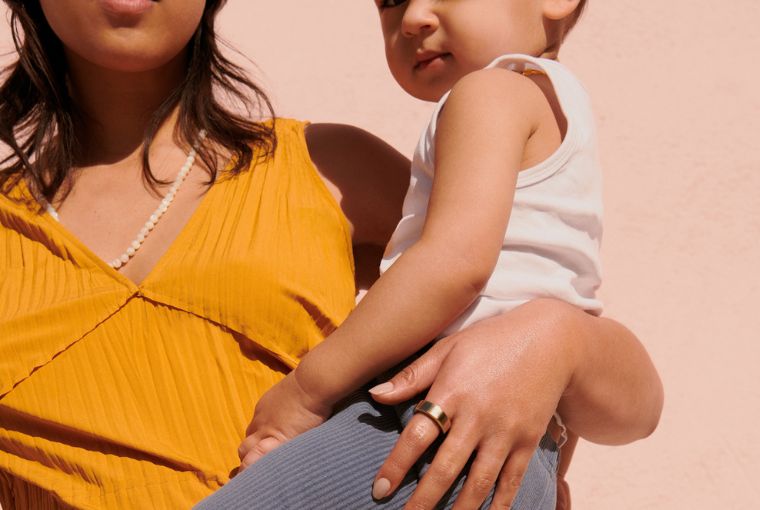4YouandMe, a non-profit organization dedicated to conducting open-source health research, is running a study called “BUMP” (Better Understanding the Metamorphosis of Pregnancy), using the Oura Ring alongside other wearable and smart devices to better understand the preconception, pregnancy, and postpartum experience. The BUMP study aims to empower individuals with the tools to understand their personal pregnancy experience rather than relying on a “one-size-fits-all” approach.
“The BUMP study was developed to address the atrocious gaps in knowledge and support for women entering the pregnancy journey — often advice from healthcare providers takes a narrow, one-size-fits-all view of what to expect, resulting from outdated research studies of un-representative study populations,” says Stephen Friend, MD, PhD, the co-founder and president of 4YouandMe. “We want to learn how to build ‘individual symptom portraits’ strong enough to guide accurate and personalized treatments that are co-piloted by the individual.”
About the Research
BUMP aims to understand how different types of objectively measured data from wearable devices (e.g., heart rate, blood pressure) can be paired with subjective data (e.g., self-reported symptoms, mood, fatigue levels) to provide early detection of when pregnant individuals might be showing signs of health risks.
The study involves 1,000+ women who are either currently pregnant or are trying to conceive. The study leverages Oura Ring, Garmin smartwatches, Bodyport smart scales, health records, genomic data (in some), and smartphones to track key experiences throughout the participant’s health journeys.
Note: In light of the recent SCOTUS ruling, the BUMP study will no longer involve the collection of some sensitive information (such as information about past pregnancies or decisions around the current pregnancy) for extra protection of their participants.
Read more about Oura’s commitment to privacy protection here.
What Does “Participant-Centric” Mean?
A key feature of 4YouandMe’s studies is their “participant-centric” approach which empowers participants and researchers to work together to co-design the research. Study organizers check in every two weeks to gather feedback to improve the study as well as distribute knowledge and support directly to participants.
“If we want these digital health approaches to work at scale, and in equitable ways, we need to make sure these tools are usable in the long term and offer personal benefits to individuals,” says Sarah Goodday, PhD, the Lead Research Scientist at 4YouandMe. “This is why it’s so important to include the participant in the design of these approaches, especially across diverse backgrounds.”
BUMP has specifically launched a “Missing Voices” arm of the study that will recruit participants through social media and community-based clinical organizations such as Community Health Center Inc, who are typically underrepresented in women’s health research.
Early Results
Early findings show that the participant-centric model yields strong engagement. “We’ve been blown away that most of our participants even continue participating in their postpartum period,” explains Emma Karlin, the Lead Clinical Research Associate and Senior Research Scientist at 4YouandMe. “Many have expressed that their regular coordinator calls are what they will miss most after their study end date.”
Figure 1. Median Adherence Rates

Legend: Median adherence rates in all BUMP participants across the different study activities
Additionally, preliminary results are showing that pregnancy journeys are highly individual and that looking at averages may not be enough to understand individual experiences.
Figure 2. Average nightly Oura respiratory rate and heart rate over pregnancy in all BUMP participants, compared to individual BUMP participants

The above graphs show a comparison of average nightly Oura respiratory rate and heart rate in BUMP participants to individual level respiratory rate across 3 unique BUMP participants. The first figure below the cohort average for both respiratory rate and heart rate shows unique BUMP participants that have a similar signal pattern to that of the cohort average, while the other two figures below, follow different patterns from that of the cohort average.
What’s Next?
The BUMP study enrollment is currently open and is close to reaching half of its target sample size, and is expected to be completed in 2023. The BUMP data (among consenting participants) will be hosted publicly via Synapse at Sage Bionetworks for other researchers to access to further the field.
You can follow 4YouandMe’s study updates, results and data availability highlights at their website. If you or a friend is trying to conceive, or are up to 15 weeks pregnant and are interested in the BUMP study, more information is available here.
About 4YouandMe
4YouandMe was built to understand how wearables (such as smart rings, smart watches, and smart scales) combined with smartphones might empower individuals to gain a better sense of control over their health, their bodies and their wellness.
“We want to shift the center of health awareness from clinicians to empowered individuals.” — Stephen Friend, MD, PhD, the co-founder and president of 4YouandMe
Become an Oura Member today: Shop the new Oura Ring Gen3.











